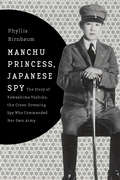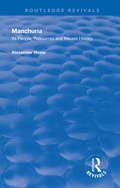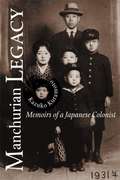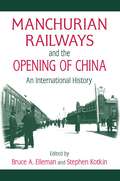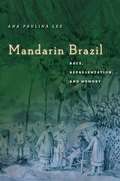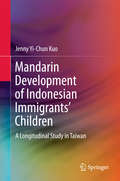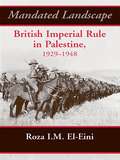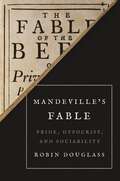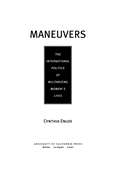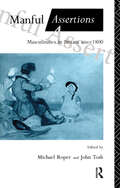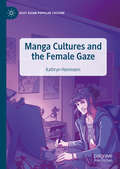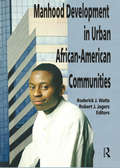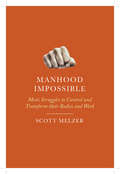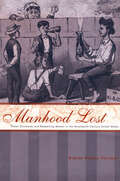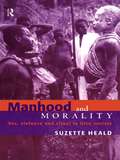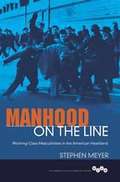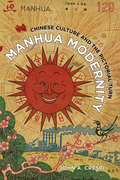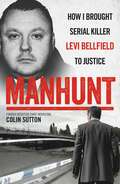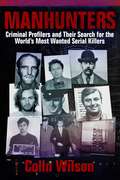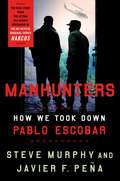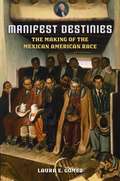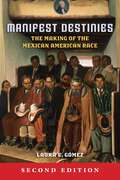- Table View
- List View
Manchu Princess, Japanese Spy
by Phyllis BirnbaumAisin Gioro Xianyu (1907--1948) was the fourteenth daughter of a Manchu prince and a legendary figure in China's bloody struggle with Japan. After the fall of the Manchu dynasty in 1912, Xianyu's father gave his daughter to a Japanese friend who was sympathetic to his efforts to reclaim power. This man raised Xianyu, now known as Kawashima Yoshiko, to restore the Manchus to their former glory. Her fearsome dedication to this cause ultimately got her killed.Yoshiko had a fiery personality and loved the limelight. She shocked Japanese society by dressing in men's clothes and rose to prominence as Commander Jin, touted in Japan's media as a new Joan of Arc. Boasting a short, handsome haircut and a genuine military uniform, Commander Jin was credited with various daring exploits, among them riding horseback as leader of her own army during the Japanese occupation of China.While trying to promote the Manchus, Yoshiko supported the puppet Manchu state established by the Japanese in 1932, which became one of the reasons she was executed for treason after Japan's 1945 defeat. The truth of Yoshiko's life is still a source of contention between China and Japan -- some believe she was exploited by powerful men, others claim she relished her role as political provocateur. China holds her responsible for unspeakable crimes, while Japan has forgiven her transgressions. This biography presents the most accurate and colorful portrait to date of the controversial princess spy, recognizing her truly novel role in conflicts that transformed East Asia.
Manchuria: Its People, Resources and Recent History (Routledge Revivals)
by Alexander HosieFirst published in 1901, this volume emerged in the aftermath of the Russian invasion of Manchuria. Its author had been in charge of the British Consulate at Newchwang in Manchuria for two periods between 1894 and 1900. The book contains an account of journeys in Eastern and Northern Manchuria, followed by chapters on recent events in Manchuria along with its climate, people, administration and industry.
Manchurian Legacy: Memoirs of a Japanese Colonist
by Kazuko Kuramoto<p>Kazuko Kuramoto was born and raised in Dairen, Manchuria, in 1927, at the peak of Japanese expansionism in Asia. Dairen and the neighboring Port Arthur were important colonial outposts on the Liaotung Peninsula; the train lines established by Russia and taken over by the Japanese, ended there. When Kuramoto's grandfather arrived in Dairen as a member of the Japanese police force shortly after the end of the Russo-Japanese War in 1905, the family's belief in Japanese supremacy and its "divine" mission to "save" Asia from Western imperialists was firmly in place. As a third-generation colonist, the seventeen-year-old Kuramoto readily joined the Red Cross Nurse Corps in 1944 to aid in the war effort and in her country's sacred cause. A year later, her family listened to the emperor's radio broadcast ". . . we shall have to endure the unendurable, to suffer the insufferable." Japan surrendered unconditionally. <p>Manchurian Legacy is the story of the family's life in Dairen, their survival as a forgotten people during the battle to reclaim Manchuria waged by Russia, Nationalist China, and Communist China, and their subsequent repatriation to a devastated Japan. Kuramoto describes a culture based on the unthinking oppression of the colonized by the colonizer. And, because Manchuria was, in essence, a Japanese frontier, her family lived a freer and more luxurious life than they would have in Japan—one relatively unscathed by the war until after the surrender. <p>As a commentator Kuramoto explores her culture both from the inside, subjectively, and from the outside, objectively. Her memoirs describe her coming of age in a colonial society, her family's experiences in war-torn Manchuria, and her "homecoming" to Japan—where she had never been—just as Japan is engaged in its own cultural upheaval.</p>
Manchurian Railways and the Opening of China: An International History
by Stephen Kotkin Bruce EllemanThe railways of Manchuria offer an intriguing vantage point for an international history of northeast Asia. Before the completion of the Trans-Siberian railway in 1916, the only rail route from the Imperial Russian capital of St. Petersburg to the Pacific port of Vladivostok transited Manchuria. A spur line from the Manchurian city of Harbin led south to ice-free Port Arthur. Control of these two rail lines gave Imperial Russia military, economic, and political advantages that excited rivalry on the part of Japan and unease on the part of weak and divided China. Meanwhile, the effort to defend and retain that strategic hold against rising Japanese power strained distant Moscow. Control of the Manchurian railways was contested in the Russo-Japanese War of 1904-5; Japan's 1931 invasion and establishment of the puppet state of Manchukuo; the second Sino-Japanese War and World War II in Asia; and, the Chinese civil war that culminated in the Communist victory over the Nationalists. Today, the railways are critical to plans for development of China's sparsely populated interior. This volume brings together an international group of scholars to explore this fascinating history.
Mandarin Brazil: Race, Representation, and Memory (Asian America)
by Ana Paulina LeeIn Mandarin Brazil, Ana Paulina Lee explores the centrality of Chinese exclusion to the Brazilian nation-building project, tracing the role of cultural representation in producing racialized national categories. Lee considers depictions of Chineseness in Brazilian popular music, literature, and visual culture, as well as archival documents and Brazilian and Qing dynasty diplomatic correspondence about opening trade and immigration routes between Brazil and China. In so doing, she reveals how Asian racialization helped to shape Brazil's image as a racial democracy. Mandarin Brazil begins during the second half of the nineteenth century, during the transitional period when enslaved labor became unfree labor—an era when black slavery shifted to "yellow labor" and racial anxieties surged. Lee asks how colonial paradigms of racial labor became a part of Brazil's nation-building project, which prioritized "whitening," a fundamentally white supremacist ideology that intertwined the colonial racial caste system with new immigration labor schemes. By considering why Chinese laborers were excluded from Brazilian nation-building efforts while Japanese migrants were welcomed, Lee interrogates how Chinese and Japanese imperial ambitions and Asian ethnic supremacy reinforced Brazil's whitening project. Mandarin Brazil contributes to a new conversation in Latin American and Asian American cultural studies, one that considers Asian diasporic histories and racial formation across the Americas.
Mandarin Development of Indonesian Immigrants' Children
by Jenny Yi-Chun KuoThis book summarizes the results a three-year longitudinal project on Mandarin development among children of Indonesian mothers, the second largest non-Mandarin speaking immigrant group in Taiwan. These children were acquiring their first language while interacting primarily with a non-native learner of the language. The book discusses phonological, lexical and syntactic development to provide a better understanding of the language development of the children of immigrants and has important implications for language education policy and language acquisition theories.
Mandated Landscape: British Imperial Rule in Palestine 1929-1948
by Roza El-EiniIn this ground-breaking authoritative study, a highly documented and incisive analysis is made of the galvanising changes wrought to the people and landscape of British Mandated Palestine (1929-1948). Using a comprehensive and interdisciplinary approach, the book’s award-winning author examines how the British imposed their rule, dominated by the clashing dualities of their Mandate obligations towards the Arabs and the Jews, and their own interests. The rulers’ Empire-wide conceptions of the ‘White man’s burden’ and preconceptions of the Holy Land were potent forces of change, influencing their policies. Lucidly written, Mandated Landscape is also a rich source of information supported by numerous maps, tables and illustrations, and has 66 appendices, a considerable bibliography and extensive index. With a theoretical and historical backdrop, the ramifications of British rule are highlighted in their impact on town planning, agriculture, forestry, land, the partition plans and a case study, presenting discussions on such issues as development, ecological shock, law and the controversial division of village lands, as the British operated in a politically turbulent climate, often within their own administration. This book is a major contribution to research on British Palestine and will interest those in Middle East, history, geography, development and colonial/postcolonial studies.
Mandeville’s Fable: Pride, Hypocrisy, and Sociability
by Dr Robin DouglassWhy we should take Bernard Mandeville seriously as a philosopherBernard Mandeville&’s The Fable of the Bees outraged its eighteenth-century audience by proclaiming that private vices lead to public prosperity. Today the work is best known as an early iteration of laissez-faire capitalism. In this book, Robin Douglass looks beyond the notoriety of Mandeville&’s great work to reclaim its status as one of the most incisive philosophical studies of human nature and the origin of society in the Enlightenment era. Focusing on Mandeville&’s moral, social, and political ideas, Douglass offers a revelatory account of why we should take Mandeville seriously as a philosopher.Douglass expertly reconstructs Mandeville&’s theory of how self-centred individuals, who care for their reputation and social standing above all else, could live peacefully together in large societies. Pride and shame are the principal motives of human behaviour, on this account, with a large dose of hypocrisy and self-deception lying behind our moral practices. In his analysis, Douglass attends closely to the changes between different editions of the Fable; considers Mandeville&’s arguments in light of objections and rival accounts from other eighteenth-century philosophers, including Shaftesbury, Hume, and Smith; and draws on more recent findings from social psychology.With this detailed and original reassessment of Mandeville&’s philosophy, Douglass shows how The Fable of the Bees—by shining a light on the dark side of human nature—has the power to unsettle readers even today.
Maneuvers
by Cynthia EnloeManeuvers takes readers on a global tour of the sprawling process called "militarization." With her incisive verve and moxie, eminent feminist Cynthia Enloe shows that the people who become militarized are not just the obvious ones--executives and factory floor workers who make fighter planes, land mines, and intercontinental missiles. They are also the employees of food companies, toy companies, clothing companies, film studios, stock brokerages, and advertising agencies. Militarization is never gender-neutral, Enloe claims: It is a personal and political transformation that relies on ideas about femininity and masculinity. Films that equate action with war, condoms that are designed with a camouflage pattern, fashions that celebrate brass buttons and epaulettes, tomato soup that contains pasta shaped like Star Wars weapons--all of these contribute to militaristic values that mold our culture in both war and peace.Presenting new and groundbreaking material that builds on Enloe's acclaimed work in Does Khaki Become You? and Bananas, Beaches, and Bases, Maneuvers takes an international look at the politics of masculinity, nationalism, and globalization. Enloe ranges widely from Japan to Korea, Serbia, Kosovo, Rwanda, Britain, Israel, the United States, and many points in between. She covers a broad variety of subjects: gays in the military, the history of "camp followers," the politics of women who have sexually serviced male soldiers, married life in the military, military nurses, and the recruitment of women into the military. One chapter titled "When Soldiers Rape" explores the many facets of the issue in countries such as Chile, the Philippines, Okinawa, Rwanda, and the United States.Enloe outlines the dilemmas feminists around the globe face in trying to craft theories and strategies that support militarized women, locally and internationally, without unwittingly being militarized themselves. She explores the complicated militarized experiences of women as prostitutes, as rape victims, as mothers, as wives, as nurses, and as feminist activists, and she uncovers the "maneuvers" that military officials and their civilian supporters have made in order to ensure that each of these groups of women feel special and separate.
Manful Assertions: Masculinities in Britain Since 1800
by John Tosh Michael RoperMasculine assertions, whether of verbal command, political power or physical violence, have formed the traditional subject matter of history. This volume combines current discussions in sexual politics with historical analysis to demonstrate that, far from being natural and monolithic, masculinity is an historical and cultural construct, with varied, competing and above all changing forms.
Manga Cultures and the Female Gaze (East Asian Popular Culture)
by Kathryn HemmannThe female gaze is used by writers and readers to examine narratives from a perspective that sees women as subjects instead of objects, and the application of a female gaze to male-dominated discourses can open new avenues of interpretation. This book explores how female manga artists have encouraged the female gaze within their work and how female readers have challenged the male gaze pervasive in many forms of popular media. Each of the chapters offers a close reading of influential manga and fancomics to illustrate the female gaze as a mode of resistant reading and creative empowerment. By employing a female gaze, professional and amateur creators are able to shape and interpret texts in a manner that emphasizes the role of female characters while challenging and reconfiguring gendered themes and issues.
Manga Discourse in Japan Theatre
by FukushimaDuring the Japanese 'bubble' economy of the 1980's, the youth of Japan began to exert unprecedented influence on Japanese culture through their spirited patronage of certain art forms previously deemed subcultural or avant-garde. Among these were manga (Japanese comics or animation) and shogekijo (Japanese little theater). These art forms, while ve
Manga's Cultural Crossroads: Manga's Cultural Crossroads (Routledge Advances in Art and Visual Studies #5)
by Jaqueline Berndt Bettina Kümmerling-MeibauerFocusing on the art and literary form of manga, this volume examines the intercultural exchanges that have shaped manga during the twentieth century and how manga’s culturalization is related to its globalization. Through contributions from leading scholars in the fields of comics and Japanese culture, it describes "manga culture" in two ways: as a fundamentally hybrid culture comprised of both subcultures and transcultures, and as an aesthetic culture which has eluded modernist notions of art, originality, and authorship. The latter is demonstrated in a special focus on the best-selling manga franchise, NARUTO.
Manhattan, '45
by Jan MorrisOn June 25, 1945, 14,000 American service men and women sailed into New York aboard the British liner Queen Mary. They were the first big contingent to return from the victory over Nazi Germany, and the city that awaited them stood at a historical climax of power, confidence, hope, and prestige, still curiously laced with a provincial innocence. In this new book by one of the most gifted stylists in the English language, we disembark at Manhattan with the returning GIs, and discover for ourselves how the city was. We ride the vanished trolleys, the El, the Hudson River ferry-boats. We meet characters as disparate as developer Robert Moses, Sherman Billingsley of the Stork Club, painter Jackson Pollock, and Joe Gould, a Greenwich Village denizen who claimed to speak the seagull language. We explore Harlem and the Lower East Side, we inspect the menu at the legendary Le Pavillon, we board the Twentieth Century Limited, and we swoon to Sinatra at Radio City Music Hall. Few aspects of Manhattan are neglected in Jan Morris's affectionate evocation--slum and Social Register are both here, City College and Times Square, the genius of the New York School and the panache of the New York Fire Department. Manhattan '45 gets its title, so the author tells us in her epilogue, because it sounds "partly like a kind of gun, and partly like champagne," and in these pages the victorious, celebratory, and explosive Manhattan of four decades ago finds a permanent souvenir.
Manhood Development in Urban African-American Communities
by Robert J Jagers Roderick J WattsOne of the first books to unite practice, research, and theory in addressing manhood development, Manhood Development in Urban African-American Communities aids in the construction of more holistic and progressive notions of African-American manhood. Proceeding from a psychological perspective, this text explores issues of culture and race as they impact on the cognitive, emotional, and behavioral characteristics of African-American boys and men. You will see how the development of self-esteem and self-image in African-American men are specifically affected by issues of gender, race, culture, religion, and oppression. You will see how the development of self-esteem and self-image in African-American men are specifically affected by issues of gender, race, culture, religion. The understanding of culture, oppression, and gender you’ll gain from this book will enable you to promote the positive development of young men.Manhood Development in Urban African-American Communities covers theories, research, and intervention programs aimed at better understanding and addressing the challenges young African-American men face in urban areas. Psychologists, sociologists, social workers, and all others interested in research on youth development will be captivated by the books explorations of: the role of culture in the social development of African-American youth cluster profiles of racial socialization beliefs, giving special consideration to factors of spiritual/religious coping, extended family care, cultural pride reinforcement, and racial awareness oppression and sociopolitical development as a basis for interventions aimed at sociopolitical awareness and action findings from SQAKs (Student Questionnaire on Academic Performance, Cognitive Development, and Social Knowledge) completed by 100 participants of the RAAMUS (Responsible African-American Men United in Spirit) Academy and their implications for future youth interventions a multi-method study that explores the relationship between gender, spirituality, and spiritual well-being and several indices of religiosity, including religious participation and religious motivation a review of manhood and womanhood development in traditional African societies and the connection with contemporary developmentThe themes of gender, oppression-liberation, and culture found throughout Manhood Development in Urban African-American Communities provide a broad scope for the inclusion of a wide range of perspectives and disciplines, ranging from the psychological to the political. This broad perspective will bring to light the specific ways in which we need to change things to allow our young African-American men living in urban areas to form healthy, positive images of themselves as individuals and as part of a greater society in which they often face grave challenges.
Manhood Impossible: Men's Struggles to Control and Transform their Bodies and Work
by Scott MelzerIn Manhood Impossible, Scott Melzer argues that boys’ and men’s bodies and breadwinner status are the two primary sites for their expression of control. Controlling selves and others, and resisting being dominated and controlled is most connected to men’s bodies and work. However, no man can live up to these culturally ascendant ideals of manhood. The strategies men use to manage unmet expectations often prove toxic, not only for men themselves, but also for other men, women, and society. Melzer strategically explores the lives of four groups of adult men struggling with contemporary body and breadwinner ideals. These case studies uncover men’s struggles to achieve and maintain manhood, and redefine what it means to be a man.
Manhood Lost: Fallen Drunkards and Redeeming Women in the Nineteenth-Century United States (New Studies in American Intellectual and Cultural History)
by Elaine Frantz ParsonsIn fiction, drama, poems, and pamphlets, nineteenth-century reformers told the familiar tale of the decent young man who fell victim to demon rum: Robbed of his manhood by his first drink, he slid inevitably into an abyss of despair and depravity. In its discounting of the importance of free will, argues Elaine Frantz Parsons, this story led to increased emphasis on environmental influences as root causes of drunkenness, poverty, and moral corruption—thus inadvertently opening the door to state intervention in the form of Prohibition. Parsons also identifies the emergence of a complementary narrative of "female invasion"—womanhood as a moral force powerful enough to sway choice. As did many social reformers, women temperance advocates capitalized on notions of feminine virtue and domestic responsibilities to create a public role for themselves. Entering a distinctively male space—the saloon—to rescue fathers, brothers, and sons, women at the same time began to enter another male bastion—politics—again justifying their transgression in terms of rescuing the nation's manhood.
Manhood and Morality: Sex, Violence and Ritual in Gisu Society
by Suzette Heald'An impressive and meticulously crafted African ethnography, which has theoretical and practical relevance for understanding masculinity and violence in general'- David Parkin, Professor of Anthropology, Cambridge University Manhood and Morality explores issues of male identity among the Gisu of Uganda and the moral dilemma faced by men who define themselves by their capacity for violence. Drawing extensively on twenty years of fieldwork and on psychological theory the book covers: circumcisionOedipal feelingswitchcraftdeviancejokingsexualityand ethnicity.This ethnographic study challenges our preconceptions of manhood, especially African virility, inviting a wider re-evaluation of masculinity.
Manhood on the Line: Working-Class Masculinities in the American Heartland (The Working Class in American History)
by Stephen MeyerStephen Meyer charts the complex vagaries of men reinventing manhood in twentieth century America. Their ideas of masculinity destroyed by principles of mass production, workers created a white-dominated culture that defended its turf against other racial groups and revived a crude, hypersexualized treatment of women that went far beyond the shop floor. At the same time, they recast unionization battles as manly struggles against a system killing their very selves. Drawing on a wealth of archival material, Meyer recreates a social milieu in stunning detail--the mean labor and stolen pleasures, the battles on the street and in the soul, and a masculinity that expressed itself in violence and sexism but also as a wellspring of the fortitude necessary to maintain one's dignity while doing hard work in hard world.
Manhua Modernity: Chinese Culture and the Pictorial Turn
by John A. CrespiA free open access ebook is available upon publication. Learn more at www.luminosoa.org. From fashion sketches of smartly dressed Shanghai dandies in the 1920s, to multipanel drawings of refugee urbanites during the war against Japan, to panoramic pictures of anti-American propaganda rallies in the early 1950s, the polymorphic cartoon-style art known as manhua helped define China's modern experience. Manhua Modernity offers a richly illustrated, deeply contextualized analysis of these illustrations across the lively pages of popular pictorial magazines that entertained, informed, and mobilized a nation through a half century of political and cultural transformation. In this compelling media history, John Crespi argues that manhua must be understood in the context of the pictorial magazines that hosted them, and in turn these magazines must be seen as important mediators of the modern urban experience. Even as times changed—from interwar-era consumerism to war-time mobilization to Mao-style propaganda—the art form adapted to stay on the cutting edge of both politics and style.
Manhunt: How I Brought Serial Killer Levi Bellfield to Justice (Manhunt #1)
by Colin SuttonWHAT DOES IT TAKE TO CATCH ONE OF BRITAIN'S MOST FEARED KILLERS? Levi Bellfield is one of the most notorious British serial killers of the last fifty years—his name alone evokes fear after his brutal murders of Milly Dowler, Marsha McDonnell and Amelie Delagrange. At 3:07pm on 21st March, 2002, Milly Dowler left her school in Surrey for the last time. An hour later, she was to be abducted and murdered in the cruellest fashion. It would be months before her body was found. In the two years that followed, two more young women—Marsha McDonnell and then Amelie Delagrange—were killed in unspeakably brutal attacks. Yet with three dead women on their hands, and few leads, police were running out of ideas—until Senior Investigating Officer Colin Sutton was drafted into the investigation. Seeing a connection between the three women, and thriving under the pressure of a serial killer hunt, Sutton was finally able to bring their murderer to justice. This is the story of how Sutton led the charge, against the clock and against the odds—day by day and lead by lead. At once a gripping police procedural, and an insight into the life of an evil man, Manhunt reveals what it takes to track down a violent serial killer before he strikes again.
Manhunters: Criminal Profilers and Their Search for the World?s Most Wanted Serial Killers
by Colin WilsonAuthor Colin Wilson opens this illuminating psychological discussion with the development of the 1977 Behavioral Science Unit, which was set up in order to answer the many questions surrounding serial killers: How does someone become a serial killer? How do they choose their victims, and why do they not feel remorse? How are they caught? Wilson interviews FBI Special Agent Robert Ressler, coiner of the term "serial killer" and one of the pioneers of criminal profiling, as well as Ted Bundy and Charles Manson in order to figure out the motives behind their grisly actions.In Manhunters, by tracking the BSU's development of psychological profiling and genetic fingerprinting, Wilson reveals the forensic investigations that caused the seizure and arrest of some of the most vile and villainous people in the world, including Jeffrey Dahmer, William Heirens, Peter Sutcliffe, John Duffy, Jerry Brudos, Wayne Williams, and many more. As he divulges the details of each case, the murderers' fantasy worlds, sadistic motives, and monstrous psychological tendencies emerge.
Manhunters: How We Took Down Pablo Escobar, The World's Most Wanted Criminal
by Steve Murphy Javier PeñaFor the first time, legendary DEA operatives Steve Murphy and Javier F. Peña tell the true story of how they helped put an end to one of the world’s most infamous narco-terrorists in Manhunters: How We Took Down Pablo Escobar—the subject of the hit Netflix series, Narcos. Colombian drug lord Pablo Escobar’s brutal Medellín Cartel was responsible for trafficking tons of cocaine to North America and Europe in the 1980s and ’90s. The nation became a warzone as his sicarios mercilessly murdered thousands of people—competitors, police, and civilians—to ensure he remained Colombia’s reigning kingpin. With billions in personal income, Pablo Escobar bought off politicians and lawmen, and became a hero to poorer communities by building houses and sports centers. He was nearly untouchable despite the efforts of the Colombian National Police to bring him to justice. But Escobar was also one of America’s most wanted, and the Drug Enforcement Administration was determined to see him pay for his crimes. Agents Steve Murphy and Javier F. Peña were assigned to the Bloque de Búsqueda, the joint Colombian-U.S. taskforce created to end Escobar’s reign of terror. For eighteen months, between July 1992 and December 1993, Steve and Javier lived and worked beside Colombian authorities, finding themselves in the crosshairs of sicarios targeting them for the $300,000 bounty Escobar placed on each of their heads. Undeterred, they risked the dangers, relentlessly and ruthlessly separating the drug lord from his resources and allies, and tearing apart his empire, leaving him underground and on the run from enemies on both sides of the law. Manhunters presents Steve and Javier’s history in law enforcement from their rigorous physical training and their early DEA assignments in Miami and Austin to the Escobar mission in Medellin, Colombia—living far from home and serving as frontline soldiers in the never ending war on drugs that continues to devastate America.
Manifest Destinies
by Laura E. GómezUsing the territory that is now New Mexico as a case study, Manifest Destinies traces the origins of Mexican Americans as a racial group in the United States, paying particular attention to shifting meanings of race and law in the nineteenth century.
Manifest Destinies, Second Edition: The Making of the Mexican American Race
by Laura E GómezManifest Destinies is an essential resource for understanding the complex history of Mexican Americans and racial classification in the United States. This is the history of the original Mexican Americans—the people living in northern Mexico in 1846 during the onset of the Mexican American War. The war abruptly came to an end two years later, and 115,000 Mexicans became American citizens overnight. Yet their status as full-fledged Americans was tenuous at best. Due to a variety of legal and political maneuvers, Mexican Americans were largely confined to a second class status. How did this categorization occur, and what are the implications for modern Mexican Americans? Manifest Destinies fills a gap in American racial history by linking westward expansion to slavery and the Civil War. In so doing, law and sociology professor Laura E. Gómez demonstrates how white supremacy structured a racial hierarchy in which Mexican Americans were situated relative to Native Americans and African Americans alike. Steeped in conversations and debates surrounding the social construction of race, this book reveals how certain groups become racialized, and how racial categories can not only change instantly, but also the ways in which they change over time. This second edition is updated to reflect the most recent evidence regarding the ways in which Mexican Americans and other Latinos were racialized in both the twentieth and early twenty-first centuries. The book ultimately concludes that it is problematic to continue to speak in terms of Hispanic &“ethnicity&” rather than consider Latinos qua Latinos alongside the United States&’ other major racial groupings. A must read for anyone concerned with racial injustice and classification today.
